Machu Picchu, Peru, is one of the most iconic and breathtaking archaeological sites in the world. Nestled high in the Andes mountains, this ancient Inca city is a UNESCO World Heritage Site and one of the New Seven Wonders of the World. Known for its stunning architecture, terraced landscapes, and mysterious history, Machu Picchu offers visitors a unique glimpse into the Inca civilization. Here are some of the best places to visit in and around Machu Picchu:
Best Places to Visit
1. The Main Ruins of Machu Picchu
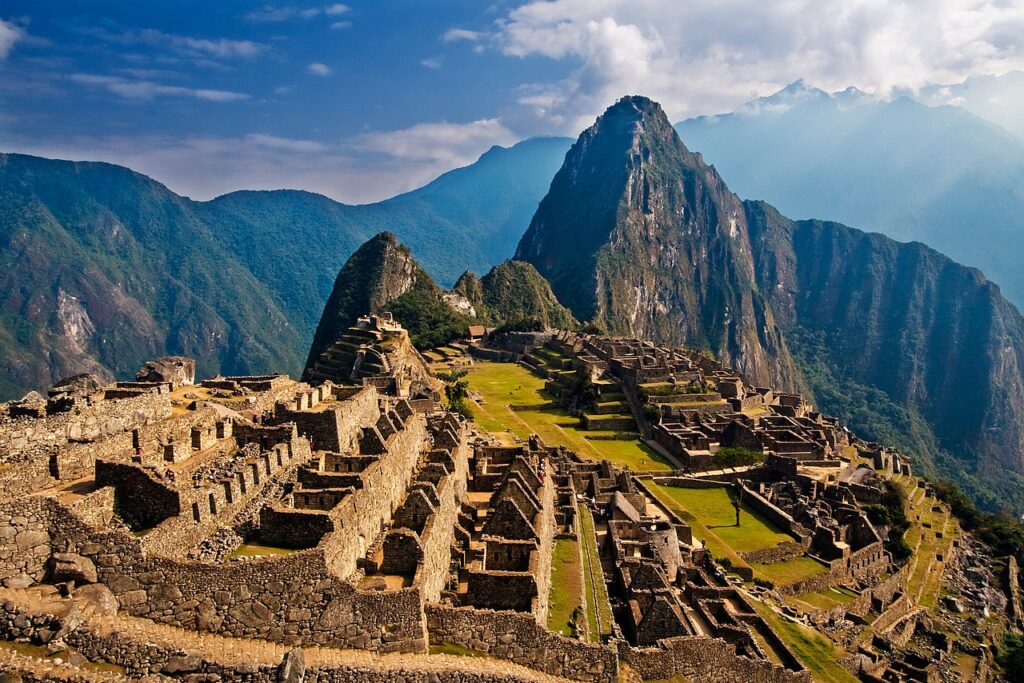
The main ruins of Machu Picchu are the central attraction and include a vast complex of well-preserved buildings, temples, terraces, and plazas. Key structures within the site include the Temple of the Sun, the Room of the Three Windows, the Sacred Plaza, and the Intihuatana stone, a ritual stone believed to have astronomical significance. The architectural sophistication and precise stonework of the ruins are remarkable, and visitors can explore the site’s many pathways and structures, gaining insight into the daily life and religious practices of the Incas.
- Key Attractions: Temple of the Sun, Intihuatana stone.
- Activities: Historical exploration, sightseeing, photography.
- Location: Central Machu Picchu.
2. Huayna Picchu
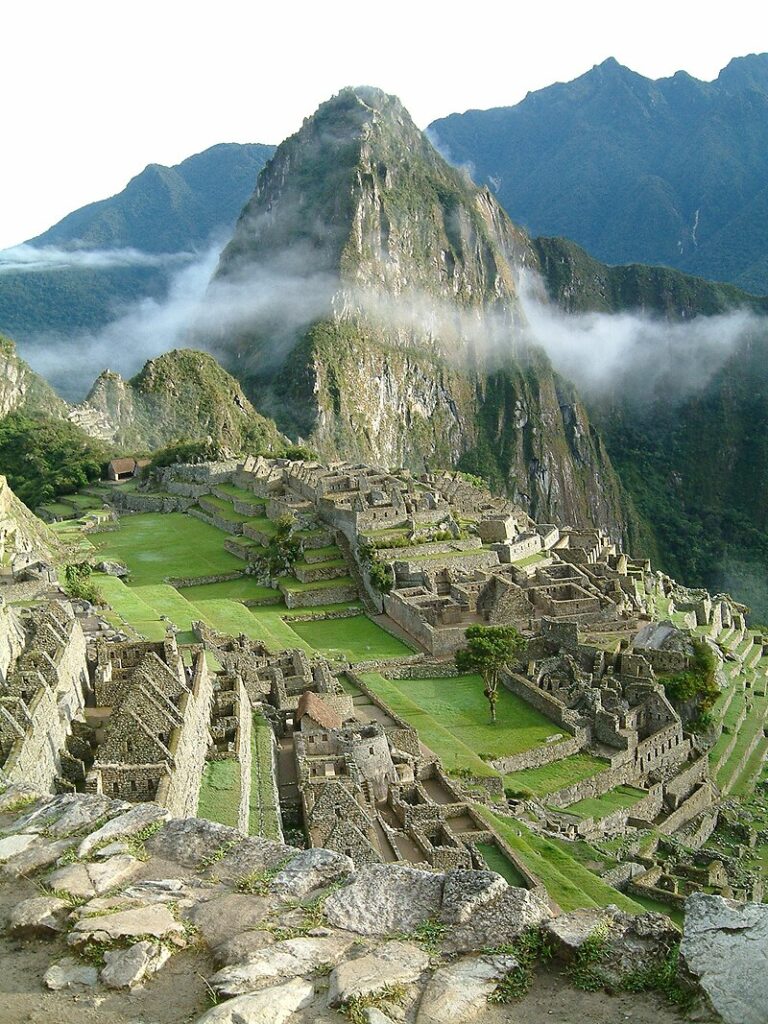
Huayna Picchu is the towering mountain that rises behind the main ruins of Machu Picchu and offers one of the most spectacular views of the ancient city. The steep and challenging hike to the summit takes about 1.5 to 2 hours and requires a permit, which must be booked in advance due to limited daily access. The trail includes narrow paths and stone staircases, leading to terraces and small temples near the top. The panoramic view from Huayna Picchu provides a unique perspective of the Machu Picchu site and the surrounding landscape.
- Key Attractions: Panoramic views, challenging hike.
- Activities: Hiking, photography.
- Location: Adjacent to Machu Picchu.
3. Temple of the Moon
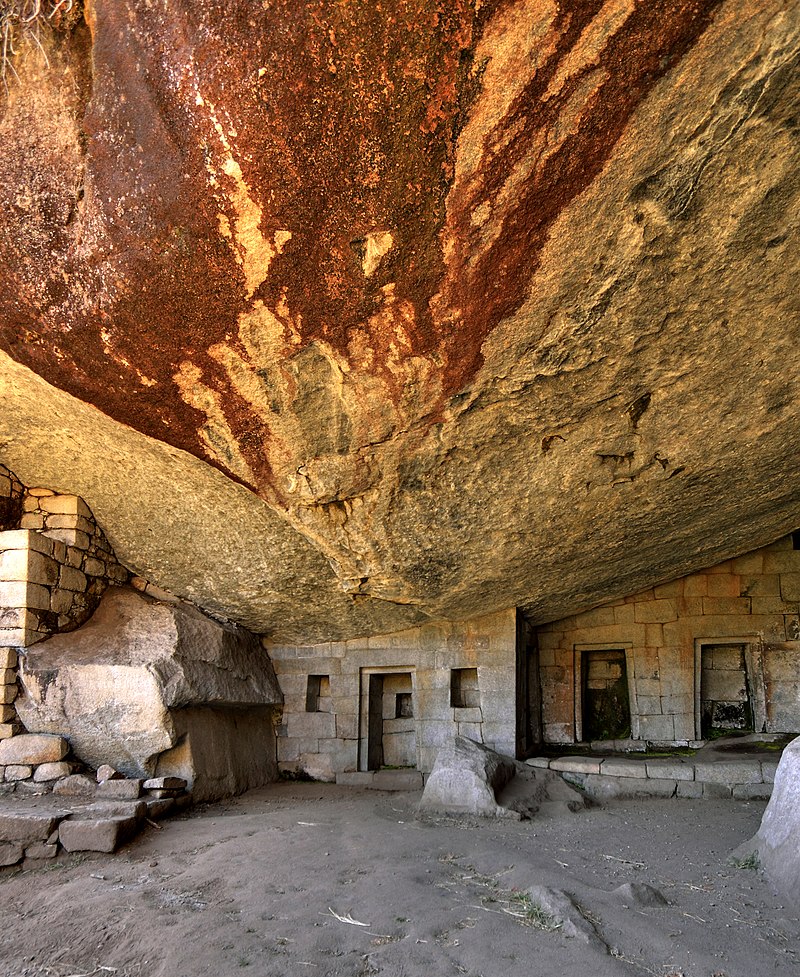
The Temple of the Moon is an intriguing and less-visited site located on the far side of Huayna Picchu. This temple, carved into a cave, features intricate stonework and is believed to have served as a place of worship or ritual. The Temple of the Moon offers a quieter and more secluded experience, allowing visitors to explore the site’s mystical atmosphere and admire the skillful craftsmanship of the Inca builders.
- Key Attractions: Cave temple, intricate stonework.
- Activities: Historical exploration, hiking.
- Location: Near Huayna Picchu.
4. The Sun Gate (Inti Punku)
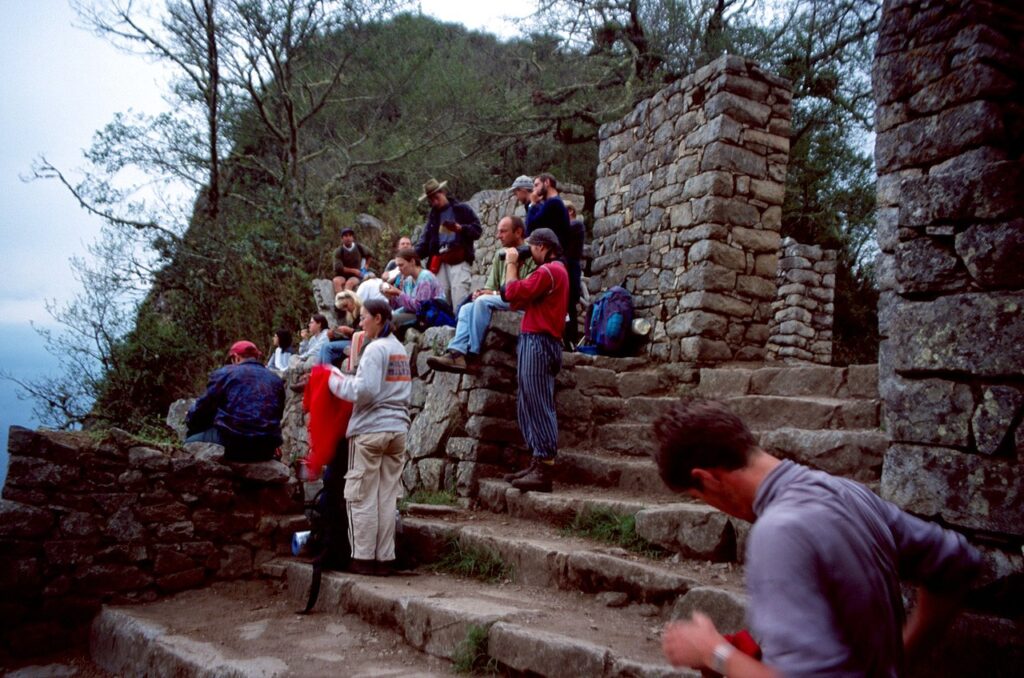
The Sun Gate, known as Inti Punku, is the original entrance to Machu Picchu from the Inca Trail. The gate offers stunning views of the ancient city and is particularly famous for the breathtaking sunrise that can be seen from this vantage point. The hike to the Sun Gate is relatively easy and takes about an hour from the main ruins. It provides a great introduction to the site and offers a glimpse of what ancient travelers might have seen as they approached Machu Picchu.
- Key Attractions: Sunrise views, historical significance.
- Activities: Hiking, photography.
- Location: Entrance to Machu Picchu from the Inca Trail.
5. The Inca Bridge
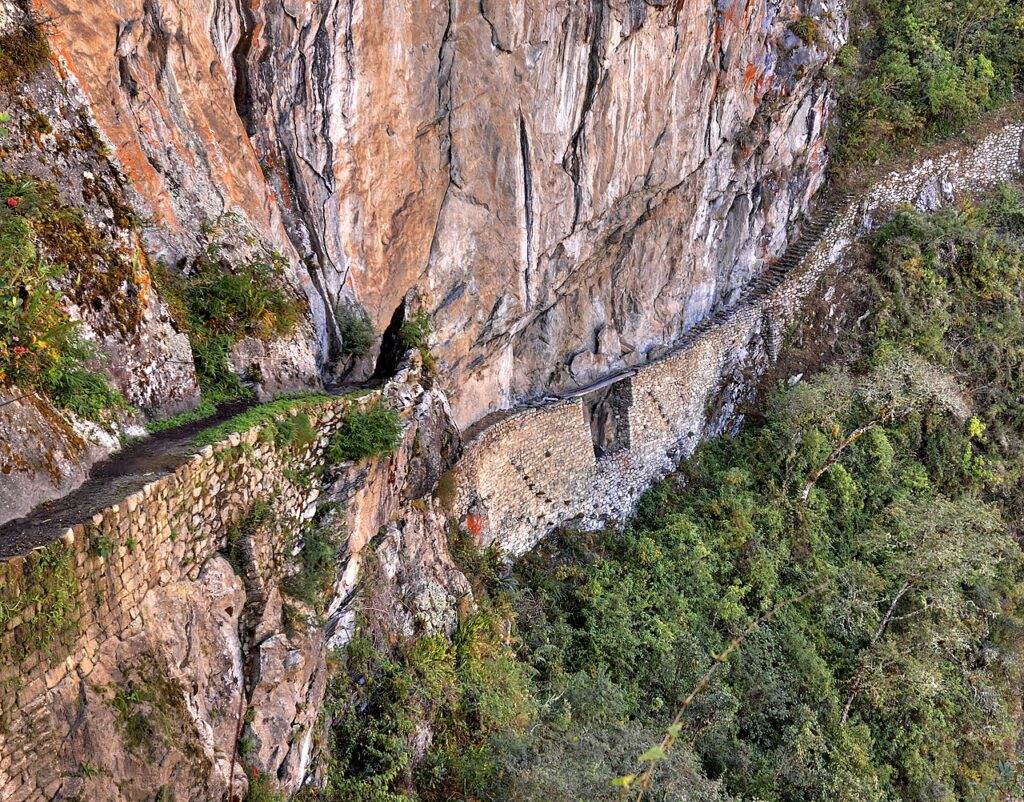
The Inca Bridge is a narrow, stone bridge built by the Incas along a steep cliffside path. The bridge, part of a secret route used by the Inca army, demonstrates the engineering prowess of the Incas and their ability to navigate the challenging Andean terrain. The walk to the Inca Bridge from the main ruins is relatively short and easy, offering impressive views of the surrounding mountains and valleys. The bridge itself is a fascinating historical feature and a testament to Inca ingenuity.
- Key Attractions: Stone bridge, cliffside path.
- Activities: Historical exploration, short hike.
- Location: Near Machu Picchu.
Summary Table
| Place | Description | Key Attraction | Distance from Main Ruins |
|---|---|---|---|
| Main Ruins of Machu Picchu | Central site with temples, terraces, and plazas | Temple of the Sun, Intihuatana stone | Central Machu Picchu |
| Huayna Picchu | Mountain offering panoramic views of Machu Picchu | Panoramic views, steep hike | Adjacent to Machu Picchu |
| Temple of the Moon | Intriguing temple carved into a cave | Cave temple, intricate stonework | Near Huayna Picchu |
| The Sun Gate (Inti Punku) | Original entrance to Machu Picchu from the Inca Trail | Sunrise views, historical significance | Above Machu Picchu |
| The Inca Bridge | Stone bridge along a cliffside path | Engineering marvel, scenic views | Near Machu Picchu |
How to Reach Machu Picchu
By Train
The most popular way to reach Machu Picchu is by train from Cusco or Ollantaytambo to the town of Aguas Calientes, also known as Machu Picchu Pueblo. The train journey offers stunning views of the Sacred Valley and the Urubamba River. From Aguas Calientes, visitors can take a bus or hike up to the entrance of Machu Picchu, located about 8 kilometers (5 miles) away.
By Inca Trail
For those seeking a more adventurous route, the Inca Trail is a historic trekking path that leads directly to Machu Picchu. The trek takes about four days and offers a unique opportunity to experience the Andean landscape and visit other Inca ruins along the way. A permit is required, and it is recommended to book with a licensed tour operator.
By Bus and Walking
From Aguas Calientes, visitors can take a bus up the winding road to Machu Picchu’s entrance. Buses run frequently throughout the day and take about 20 minutes. Alternatively, visitors can hike up to the site, which takes approximately 1.5 to 2 hours.
Best Time to Visit Machu Picchu
The best time to visit Machu Picchu is during the dry season, from April to October, when the weather is generally clear and mild. The peak tourist season is from June to August, coinciding with the dry season and summer holidays. The wet season, from November to March, brings more rain and fewer crowds, but the site remains open year-round. Early mornings and late afternoons are less crowded and offer beautiful lighting for photography.
Travel Tips
- Local Cuisine: Aguas Calientes, the gateway town to Machu Picchu, offers a variety of dining options, from local Peruvian cuisine to international dishes. Try local specialties such as ceviche, lomo saltado (stir-fried beef), and quinoa soup.
- Cultural Insights: Machu Picchu is a sacred site with deep cultural and historical significance. Visitors are encouraged to respect the site and follow all rules and regulations, including not touching the ruins and staying on designated paths. Hiring a local guide can provide valuable insights into the history and culture of the Inca civilization.
- Safety Tips: Machu Picchu is located at a high altitude, so visitors should be mindful of altitude sickness. It’s advisable to acclimatize in Cusco or Aguas Calientes before visiting the site. Bring plenty of water, sunscreen, and comfortable walking shoes. Be prepared for changing weather conditions and pack appropriately.
Itinerary Suggestions
One-Day Trip
- Morning: Start your day early with a visit to the main ruins of Machu Picchu. Explore the key sites, including the Temple of the Sun, the Sacred Plaza, and the Intihuatana stone. Take in the stunning views and learn about the history of the Inca civilization.
- Afternoon: Hike up to the Sun Gate (Inti Punku) for a breathtaking view of Machu Picchu and the surrounding mountains. Return to the main site and visit the Inca Bridge, marveling at the engineering skills of the Incas. Descend to Aguas Calientes for lunch and a stroll through the town.
Two-Day Trip
- Day 1: Spend the day exploring Machu Picchu and its main attractions, including Huayna Picchu, if permits are available. Hike to the Temple of the Moon and enjoy the panoramic views from the top of Huayna Picchu. Return to Aguas Calientes for an overnight stay.
- Day 2: Visit the Machu Picchu Museum and Botanical Garden in Aguas Calientes to learn more about the site’s history and the flora of the region. Explore the local markets and enjoy a leisurely lunch before returning to Cusco or Ollantaytambo by train.
Machu Picchu’s awe-inspiring beauty, rich history, and mystical atmosphere make it a must-visit destination for travelers from around the world. Whether you’re exploring the ancient ruins, hiking the surrounding peaks, or delving into the Inca culture, Machu Picchu offers an unforgettable experience that will leave a lasting impression.
The best time to visit Machu Picchu is during the dry season, from April to October, when the weather is generally clear and ideal for exploring the ruins. The peak months are June to August, so consider visiting in April or October for fewer crowds.
To reach Machu Picchu from Cusco, most travelers take a train to Aguas Calientes, the town closest to the site, and then a bus up to the entrance. Alternatively, you can hike the famous Inca Trail, which takes several days and ends at Machu Picchu.
Pack lightweight, breathable clothing, a hat, sunscreen, and comfortable hiking shoes. Don’t forget a rain jacket, as weather can change quickly, and a reusable water bottle to stay hydrated. A camera or smartphone is also essential to capture the stunning views.





